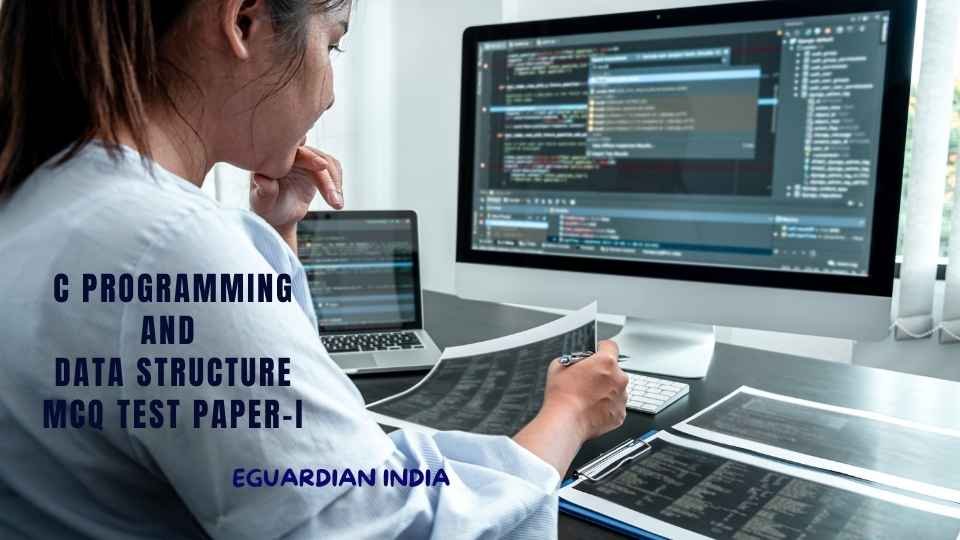Image Processing is an important topic in computer science. Many algorithms and concepts used in image processing can be found in other fields such as mathematics and engineering. Image processing is an essential part of many fields, such as computer vision, medical imaging, and geological surveying.
In this Quiz, we will provide you with 50 MCQs related to image processing. After reading the article, take the corresponding quiz to test your knowledge. Good luck!
Brief Introduction to Image Processing
Image processing is the process of manipulating digital images. Image processing can be used for a variety of purposes, such as photo editing, image recognition, medical imaging, and traffic control.
The field of image processing is vast and complex, involving the manipulation of digital images to create desired results.
Many different techniques are available for accomplishing this, from simple cropping and resizing to more sophisticated operations like sharpening and blurring. Whatever the task, the right software can make it easy and efficient.
Here are some of the most common image processing MCQ Questions with answers:
1. An image is a two-dimensional function of ___ coordinates.
1. Spatial
2. Network
3. Dimension
4. All of the above
Answer: 1. Spatial
2. Digital images were widely used in the application area ___.
1. Banks
2. Hospitals
3. Newspapers
4. Schools
Answer: 3. Newspapers
3. The early bartlane systems were capable of coding images in five distinct levels of gray.
1. true
2. false
Answer: 1. true
4. EDT stands for
1. early daylight time
2. eastern digital time
3. eastern daylight technique
4. eastern daylight time
Answer: 4. eastern daylight time
5. The principal energy source for images in use today is the ___.
1. x-ray
2. B-ray
3. electromagnetic energy spectrum
4. laser ray
Answer: 3. electromagnetic energy spectrum
6. Medicine, biological science, geographers, and satellite communications use digital images.
1. accepted
2. non-accepted
Answer: 1. accepted
7. major uses of imaging based on ___ include nuclear medicine and astronomical observations.
1. alpha rays
2. beta rays
3. gamma-ray
4. laser rays
Answer: 3. gamma-ray
8. modality of nuclear imaging called positron emission tomography.
1. correct
2. incorrect
Answer: 1. correct
9. ___ are among the oldest sources of em radiation used for imaging.
1. alpha rays
2. beta rays
3. x-rays
4. laser rays
Answer: 3. x-rays
10. Angiography is used to obtain images of blood vessels in an area of ___.
1. investigation
2. transparency
3. contrast enhancement radiography
4. none of the above
Answer: 3. contrast enhancement radiography
11. ___ light is used in fluorescence microscopy
1. laser beam
2. ultraviolet light
3. fluorescence light
4. all of the above
Answer: 2. ultraviolet light
12. ___ procedures partition an image into its constituents parts or objects.
1. classification
2. segmentation
3. aggregation
4. breaking up
Answer: 2. segmentation
13. for image processing digitizer is required that performs arithmetical and logical operations on images like ALU
1. true
2. false
Answer: 1. true
14. digitizer is a device for converting the output of the physical sensing device into ___.
1. analog form
2. image
3. digital form
4. all of the above
Answer: 3. digital form
15. in a digital video camera, the sensors produce an electrical output proportional to light intensity the digitizer converts these outputs to ___.
1. digital data.
2. analog data
3. graphics data
4. audio data
Answer: 1. digital data.
16. the key consideration in image transmission is ___.
1. resolution power
2. number of pixels
3. bandwidth
4. all of the above
Answer: 3. bandwidth
17. digital storage for image processing plications falls into ___ categories
1. short-term storage
2. online storage
3. archival storage
4. all of the above
Answer: 4. all of the above
18. Digital image processing refers to the processing of a finite number of elements are referred to as ___
1. picture elements
2. image elements
3. pixels
4. all of the above
Answer: 4. all of the above
19. digital image processing is based on the concepts of maths, ___.
1. probabilistic formulation
2. human intuition,
3. analysis
4. all of the above
Answer: 4. all of the above
20. The homogeneity predicate can be based on the Characteristics of the regions in the image are ___, ___, ___, and ___.
1. average intensity, variance, color, texture
2. high intensity, variance, color, texture
3. low intensity, variance, layout, texture
4. average intensity, variance, color, framework
Answer: 1. average intensity, variance, color, texture
21. ___vision is called photonic vision.
1. Cone
2 fovea
3. retina
4. focal length
Answer: 1. Cone
22. Light that is void color is called ___ light.
1. Achromatic
2. Visible
3. ultraviolet
4. none of the above
Answer: 1. Achromatic
Q23. The range of values spanned by the grayscale is called the ___- of an image.
1. Dynamic range
2. Image element
3. static range
4. all of the above
Answer: 1. Dynamic range
24. The effect of aliased frequencies can be seen under the right condition in the form of the so-called ___.
1. Morie pattern
2. Sorie pattern
3. both 1 and 2
4. none of the above
Answer: 1. Morie pattern
25. ___ are used to calculate the spatial distance between pixel locations.
1. Euclidean distance
2. Distance measures
3. focal distance
4. all are correct
Answer: 2. Distance measures
26. The ____ of P and Diagonal neighbors of P are called 8-neighbors.
1. 4- Neighbors
2. 8-Neighbors
3. 2-Neighbors
4. 9-Neighbours
Answer: 1. 4- Neighbors
27. ___ is a Point by point mapping of NA’s original color image.
1. False color
2. True color
Answer: 1. False color
28. ___ is a method for Contrast Manipulation.
1. Amplitude scaling
2. Multispectral Image
3. scaling
4. none of the above
Answer: 1. Amplitude scaling
29. The ___ of an image can be obtained with a reversal type of film.
1. Positive transparency
2. Negative transparency
3. Neutral transparency
Answer: 1. Positive transparency
30. Modern color photography system utilizes an integral ___.
1. Tripack film
2. Nonreversal film
3. both 1 and 2
4. none of the above
Answer: 1. Tripack film
31. ___ may be caused by electronic imaging sensors or film granularity.
1. Image Covariance
2. Noise Disturbances
3. noisy collision
4. classification
Answer: 2. Noise Disturbances
32. The ___ response of the restoration filter is chosen to minimize the mean square restoration error.
1. Impulse
2. Blind image
3. dynamic image
4. static image
Answer: 1. Impulse
33. Interior fill to create a black pixel if all four connected neighbor pixels are black.
1. True
2. False
Answer: 1. True
34. Isolated pixels erase a black pixel with eight white neighbors.
1. True
2. False
Answer: 1. True
35. An ___ consists of erosion followed by dilation.
1. Close operation
2. Open operation
3. none of the above
4. both 1 and 2
Answer: 2. Open operation
36. Sobel operator is superior for a ___ edge.
1. Diagonal
2. Color
3. center
4. vertical edge
Answer: 1. Diagonal
37. ___ attributes are properties of a shape that are invariant under rubber sheet transformation.
1. Topological shape
2. Distance transform
3. Sequential
4. None of the above
Answer: 1. Topological shape
38. Perimeter and area measurements are meaningful only for ___ images.
1. Secondary
2. Binary
3. Primary
4. None of the above
Answer: 2. Binary
39. The distance between the center of the lens & the retina is called ___
1. Focal length
2. Retina
3. Cornea
4. None of the above
Answer: 1. Focal length
40. Pixels that are in error Often appear visually to be markedly different from their neighbors.
1. True
2. False
Answer: 1. True
41. compression deals with the techniques for reducing the ___ required to save an image or the ___ required to transmit it.
1. storage, bandwidth
2. processing, wavelength
3. none of the above
4. all of the above
Answer: 1. storage, bandwidth
42. digital image processing involves image acquisition, image enhancement, image restoration, ___ wavelets, and multiresolution processing ___ morphological processing, ___ representation, and description ___ respectively
1. color image processing, compression, segmentation, object recognition
2. compression, segmentation, object recognition, color image processing
3. color image processing, compression, object recognition, segmentation
4. all are correct
Answer: 1. color image processing, compression, segmentation, object recognition
43. (i) pixel is not used to denote the elements of a digital image.
(ii)the dominant application of imaging in the microwave band is radar
1. (i) true (ii) false
2. (i) false (ii) false
3. (i) true (ii) false
4. (i) false (ii) true
Answer: 4. (i) false (ii) true
44. The sensor is of type photodiode which is constructed of ___ materials and whose output voltage waveform is proportional to ___.
1. phosphorus, light
2. silicon, light
3. magnetic, battery
4. all of the above are correct
Answer: 2. silicon, light
45. MRI and PET stand for
1. minimum resonance imaging, positron emission tomography
2. resonance imaging, power emission tomography
3. magnetic resonance imaging, positron emission tomography
4. maximum resonance imaging, positron emission tomography
Answer: 3. magnetic resonance imaging, positron emission tomography
46. Cornea, choroid, and retina are three membranes that enclose ___ and the distance between the center of the lens and the retina is called ___
1. kidney, focal length
2. eye, focal length
3. brain, circumference
4. all of the above
Answer: 2. eye, focal length
47. to create a digital image we need to convert the continuous sensed data into digital form. this involves two processes ___ and ___.
1. zooming, quantization
2. sampling, resolution
3. sampling, quantization
4. none of the above
Answer: 3. sampling, quantization
48. (i) sampling rate in images is the number of samples taken
(ii) the sine/cosine components with the highest frequency determine the highest frequency content of the function.
1. (i) true (ii) false
2.(i) false (ii) false
3. (i) true (ii) true
4. (i) false (ii) true
Answer: 4. (i) false (ii) true
49. There are two basic approaches to the modeling of image degradation effects a ___ and a ___
1. Priori modelling, Posteriori modelling
2. Digitizer, display
3. None of the above
Answer: 1. Priori modelling, Posteriori modelling
50. The ___ & ___ operation for binary images can easily be extended to a greyscale.
1. Open & close.
2. Close & open
3. None of the above
Answer: 2. Close & open
You may like to read more MCQs of IP for your next Exam
Conclusion
Image processing is an important field of study that has many applications. There are many different types of image processing, and each has its own set of advantages and disadvantages. The field is constantly evolving, and new techniques are being developed all the time.
If you’re interested in image processing, there are plenty of resources available to help you get started. Thanks for reading!
If you like Image Processing MCQ multiple choice questions with answers, please share them on social media with friends and family members.



